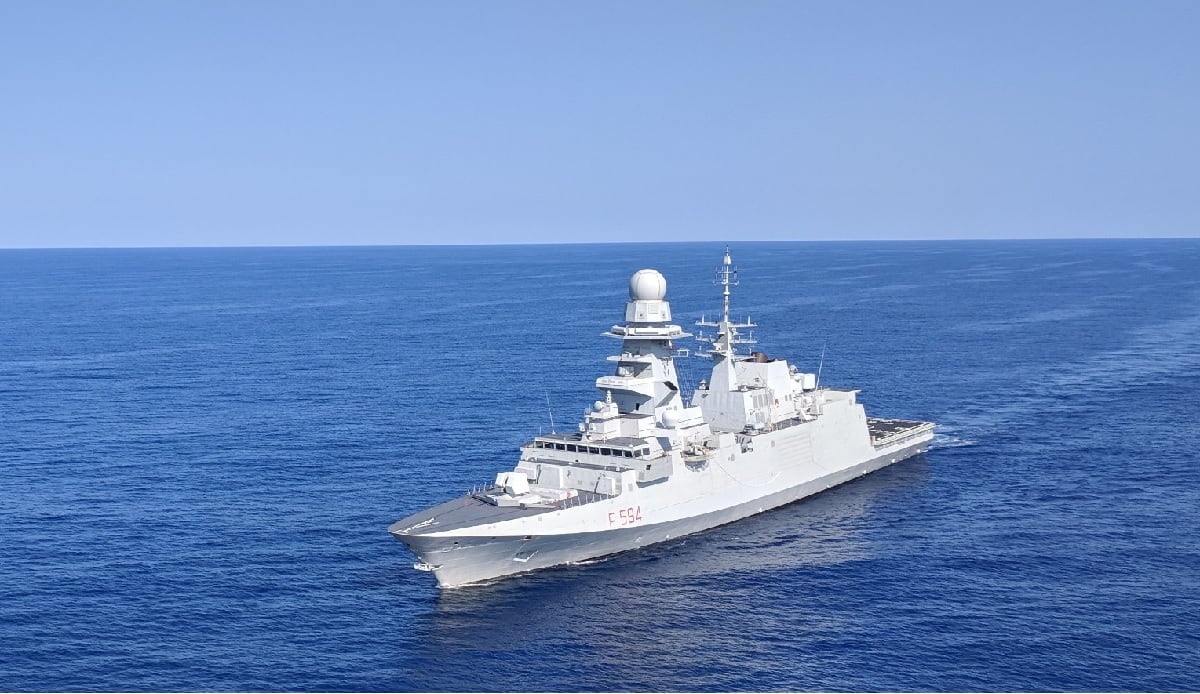WASHINGTON — To meet the U.S. Navy’s famously high survivability standards, the FREMM frigate design has had to hit the gym and pack on hundreds of thousands of pounds of muscle in pursuit of wining the Navy’s FFG(X) competition.
U.S. Navy ships are built like linebackers: able to take hit upon hit and stay in the game. But that comes at the cost of extra steel. And in the case of Italian shipbuilder Fincantieri’s FREMM, it meant adding hundreds of tons of steel, said retired Adm. Rick Hunt, a former head of Naval Surface Force Pacific who now works for the Italian company.
“We did, like all the competitors, monthly technical exchange meetings with the government to make sure we were as compliant as possible going into detailed design and construction,” he said. “One of the things that the Navy wasn’t going to budge on, and we agreed, was the toughness of the ship. So we added about 300 tons of steel on the design for the FREMM.”
RELATED

Bringing the ship up to Naval Sea Systems Command’s high standards for toughness was always a foregone conclusion for this competition, but packing on all that steel drives choices into the design, especially when the Navy is trying its best to get a highly capable frigate for less than $1 billion.
Fincantieri’s FREMM is competing alongside three other offerings: General Dynamics Bath Iron Works and Navantia’s F-100 variant, which is roughly equivalent to a small Arleigh Burke-class destroyer; a modified, up-gunned version of the National Security Cutter from Huntington Ingalls Industries; and Austal USA’s frigate version of its aluminum-hulled Independence-class littoral combat ship.
Lockheed Martin’s version of the FFG(X), an up-gunned, twin-screw variant of its Freedom-class LCS, was pulled from the competition in May.
As for the FREMM, the extra weight eats into some of the extra space on the ship — its spaciousness is one of the defining characteristics of the platform.
“[The extra steel is] going into scantling, ballistic and frag protection, the way the spaces are laid out: We’re as compliant as a DDG. That’s a lot of steel. The compartmentation, the toughness of the ship, the U.S. requirements that are different from the European ships — we moved around some of that extra space; it gets classified very quickly.”
What hasn’t been compromised has been the modularity of the ship that creates routes for major equipment to be brought in and out of the hull so that replacing, for example, major engine or computer components doesn’t require cutting a hole in the ship, Hunt said.
The berthing compartments are also the same: four- to six-person staterooms with private showers for each room.
“The most you’ll see in normal steaming is four, it’s officer quality," Hunt said. "And that was a fight: That was a back-and-forth with big Navy and again an area that we came to an agreement on, and we’re holding do that.”
Overall, the design they are working on is perhaps less roomy than its European counterpart, but it does maintain a lot of extra space and capacity for upgrades to the power and propulsion system in future FFG(X) blocks or with retrofit upgrades, Hunt said.
For example, FREMM has the additional capacity to support an air warfare commander role, Hunt said, and could, with extra electrical power, support a larger 37-radar module assembly phased array instead of the nine-RMA array that’s in the FFG(X) requirements.
“Be flexible in what you do right now, surge to more capacity as soon as we get that [requirement] and be able to grow the ship in lot changes should you need something even greater in the future,” Hunt said.
David B. Larter was the naval warfare reporter for Defense News.








